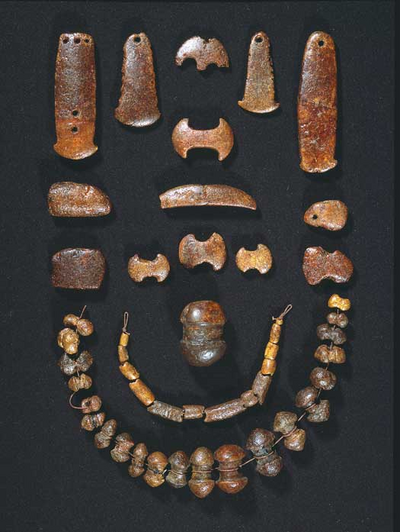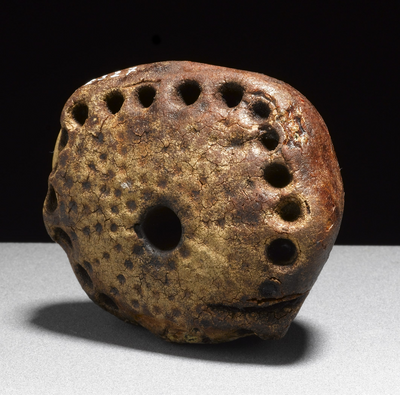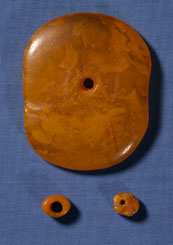How were the amber beads used?
In the Neolithic there were many different types of amber beads. It is not clear how they were worn. In fortunate cases among grave finds, the order in which the beads were threaded through the strings can be seen. In some instances one even finds remains of the strings that held the beads together. They can be preserved inside the holes in the beads and seem to have been made of gut. Some of the beads may have been sewn to clothing. The so-called double-axe beads, for example, have a clear front and back. Perhaps these particular beads were attached to the costume, instead of being worn in a necklace.
Amber beads are found both as sacrificial deposits and in graves. The amber beads from the graves vary greatly in form, and they can be divided into numerous types: double-axe, crescent and pointed-oval beads, just to mention a few. Unfortunately beads from graves are often rather poorly preserved. This is especially the case with beads found in the sandy soils of Jutland, which have often almost crumbled away to nothing.



A great variety of shapes and sizes is seen among the amber beads of the Neolithic Period. The use of amber for jewellery was not a new idea - the hunter-gatherers of the Mesolithic Period also made amulets of amber.
